Strader's Favorite Indoor Plants Safe for Cats
16 Indoor Plants That Are Pet Safe Plants
When you have cats in your home, it is vital to know which indoor and outdoor plants to avoid. Some species of indoor plants can be harmful to cats and other pets. Strader’s Garden Center has created a list of our top 16 indoor plants safe for cats.
If you have cats in your home and indoor plants around, the chances are that your little kitty loves to nibble on them. Indoor plants not only improve the ambiance of interiors but also help purify the indoor air. Some are even known to have medicinal and therapeutic benefits.
However, not all plants are safe indoor plants for cats. Some indoor plants will make your cat sick, while other plants, like cat grass, can help your feline friend thrive. But the question remains, how do you tell that a specific plant is harmful to your cat? Strader’s explains:
What makes an indoor plant dangerous for your cat?
We all love our furry little friends, but unfortunately, not everything in the home is safe for them. The ASPCA’s Poison Control Center estimates that more than 10,000 cats and dogs were admitted to veterinary hospitals just from eating indoor houseplants alone in 2020.
Unfortunately, identifying poisonous plants can be difficult because several toxic indoor plants may appear similar to harmless, non-toxic ones. Take the time to go through this plant list to look up toxic and non-toxic plants you may already have in your home.
Keep your cats safe with these indoor plants!
There are many indoor plants that cats like to chew on, so you must be careful with any live indoor plants in your home, but Strader’s has put together a great list of indoor plants that are safe for cats.
Let’s dive in:
Fittonia
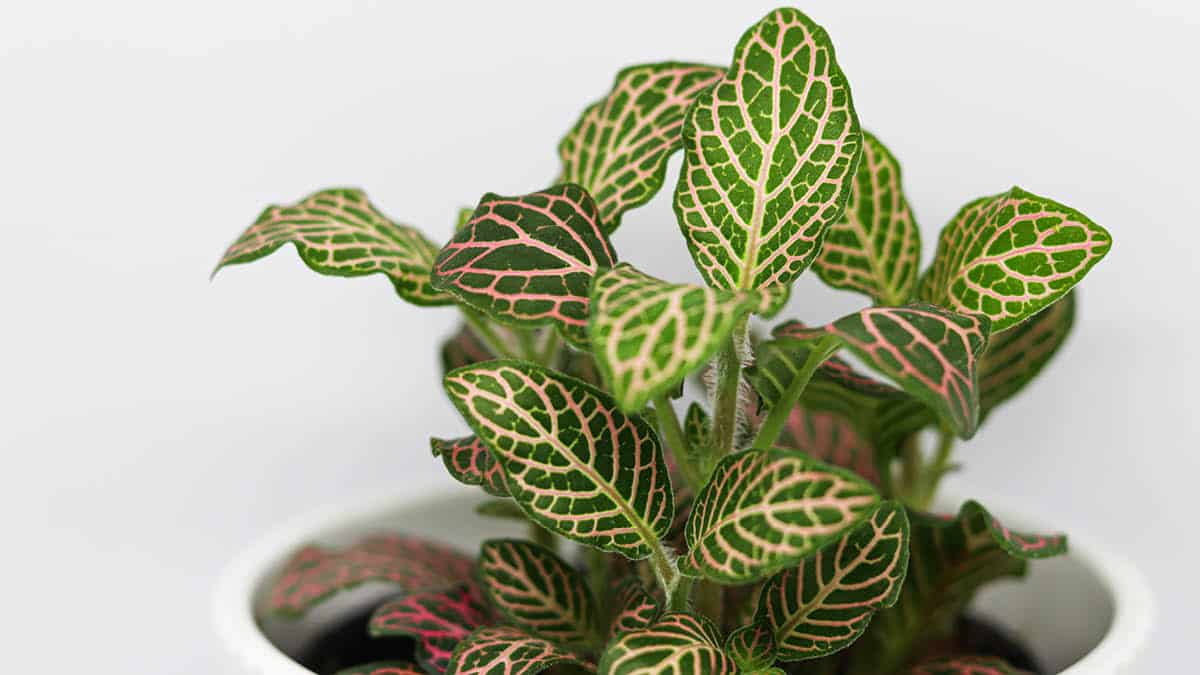
These plants are compact with striking patterned foliage. Fittonia is relatively easy to care for– tolerating a range of lighting conditions and like to be kept moist. They prefer humid environments and will benefit from regular misting. If you are a plant parent that loves to tend to your plants often, this is the plant for you.
Fittonia originates in South America, primarily found in Peru. They grow in tropical rainforests as ground cover under canopies of trees. Because of this, they stay relatively small and prefer brighter indirect light.
Fittonia Care:
When your Fittonia is thirsty, it will tell you! Don’t be alarmed if you look over to see your Fittonia completely limp and wilted. Give it a good drink, and it should perk up in no time. Fittonia does not require a lot of water, so allow the top layer of soil to dry out slightly between waterings.
Bromeliads
Bromeliads provide an exotic touch to your home and bring a sense of the tropics and sun-kissed climates. The unusual appearance of the bromeliad would seem to indicate that the plant is high maintenance or requires special gardening skills. The plant is prized for its thick foliage that grows in a natural rosette. The broad leaves are sword-shaped or scoop-like and grow around a central “cup.” This cup catches water in the plant’s habitat. Bromeliad plants are often epiphytic and cling to trees or other structures. They are not parasitic but simply use the structures as perches to gather sun and moisture.
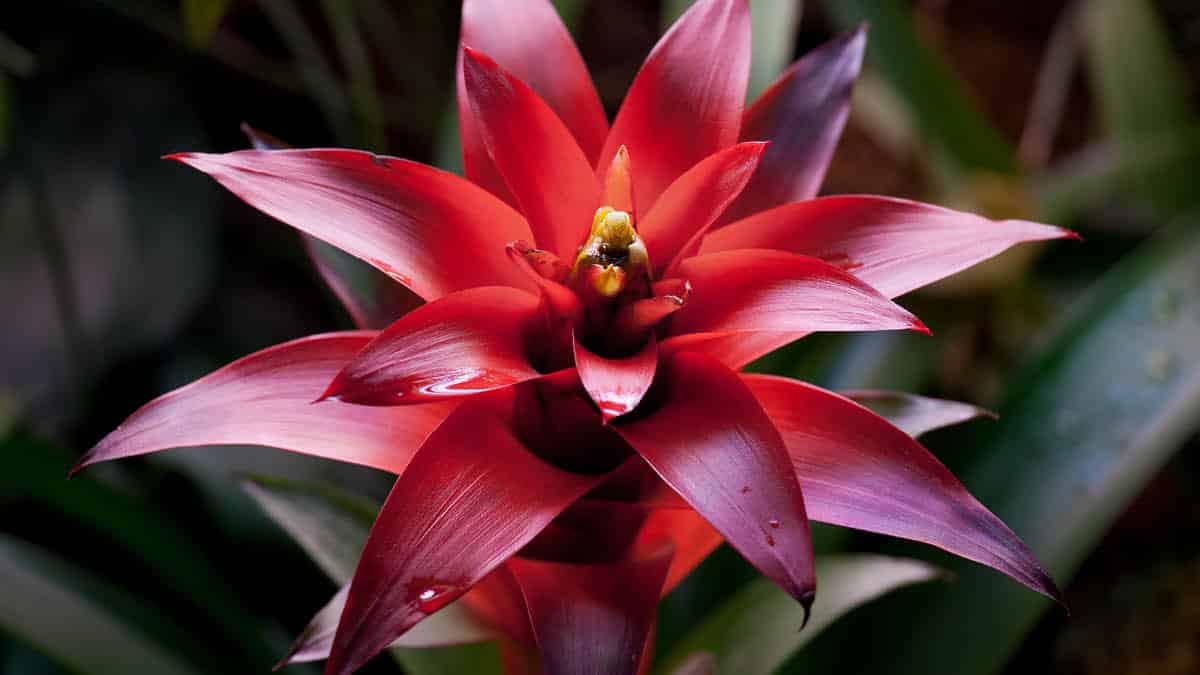
Bromeliad Care:
Bromeliads need very little light so that you can place them in a room with low lighting or even bright, indirect sunlight. Keep them away from windows where the direct sun might hit them. Be sure to put them in an area with good air circulation. Water needs are easily met by filling the cup at the base of the leaves. Set the pot in a saucer of gravel filled partially with water to increase humidity and help provide a moist atmosphere. Make sure the roots are not submerged in the water, or this might invite rot.
Venus Fly Traps
The Venus Fly Trap, Dionaea muscipula, is native to North and South Carolina in the United States. These plants grow in bogs, swamps, and wet savannas. Venus Fly Traps are carnivorous plants that lure, capture, and digest insects for nutrients.
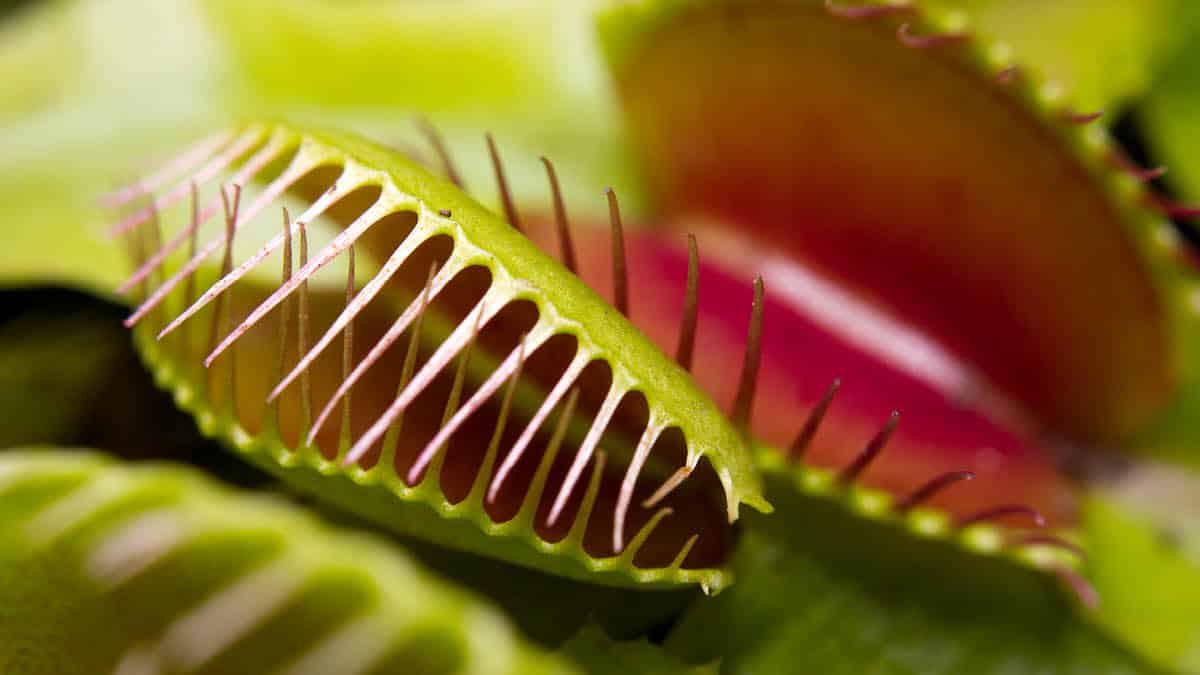
Venus Fly Trap Care:
The most crucial factor in growing a healthy Venus Flytrap is light. They love bright, indirect sunlight. You don’t need to have them in front of a window, though; place near a sunny window where they’ll receive natural sunlight that’s filtered through glass or plastic.
Money Trees
The Money Tree is a succulent plant, which means it stores water in its leaves, stems, and roots, allowing it to survive in dry climates. Money trees grow in bright light or partial shade, and some believe money trees symbolize good luck and financial success.
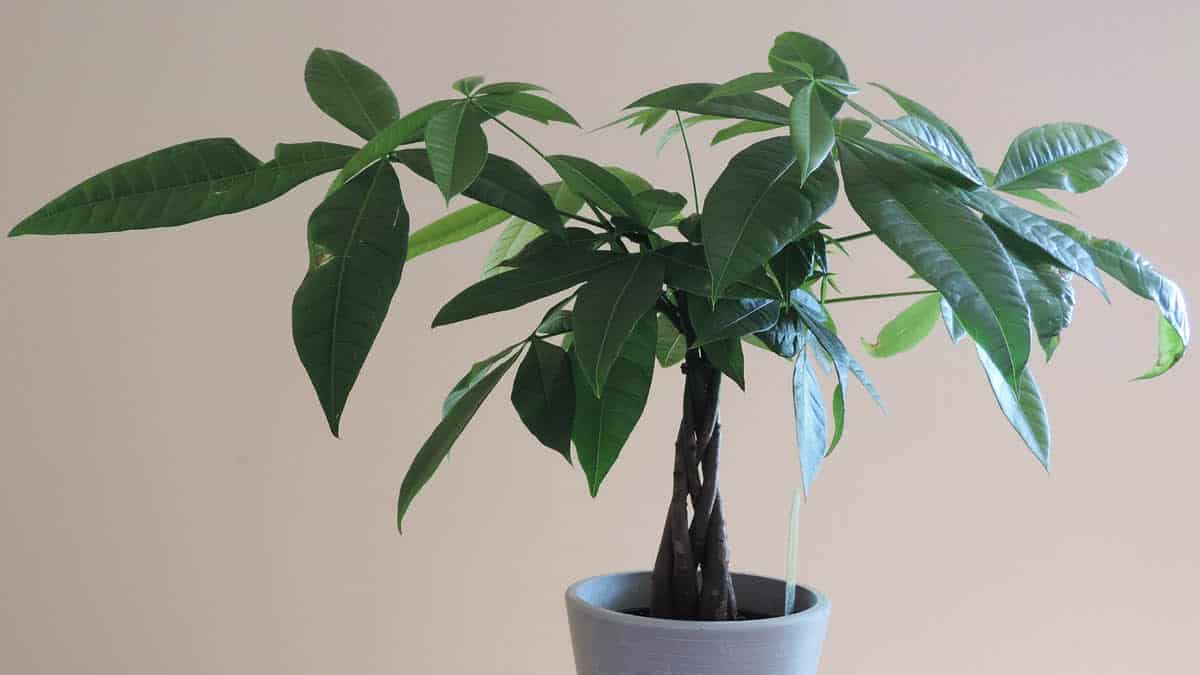
Money Tree Care:
Money Trees don’t need to be watered frequently — just once or twice a week in the winter and maybe every other day during the summer. You can water your plant less often if you add some pebbles to the pot to help retain moisture. Also, place your money tree in a bright, sunny location with plenty of ventilation.
Haworthia
The Haworthia is a miniature succulent native to South Africa and is one of the easiest houseplants to care for. A common Haworthia is characterized by its rosette-shaped, tightly packed leafy clusters. Some are firm, tough, and dark green, whereas others are softer and even translucent. Those of the firm, dark green variety are typically dotted with white spots and can turn a rich hue of purple-red when exposed to full sun.
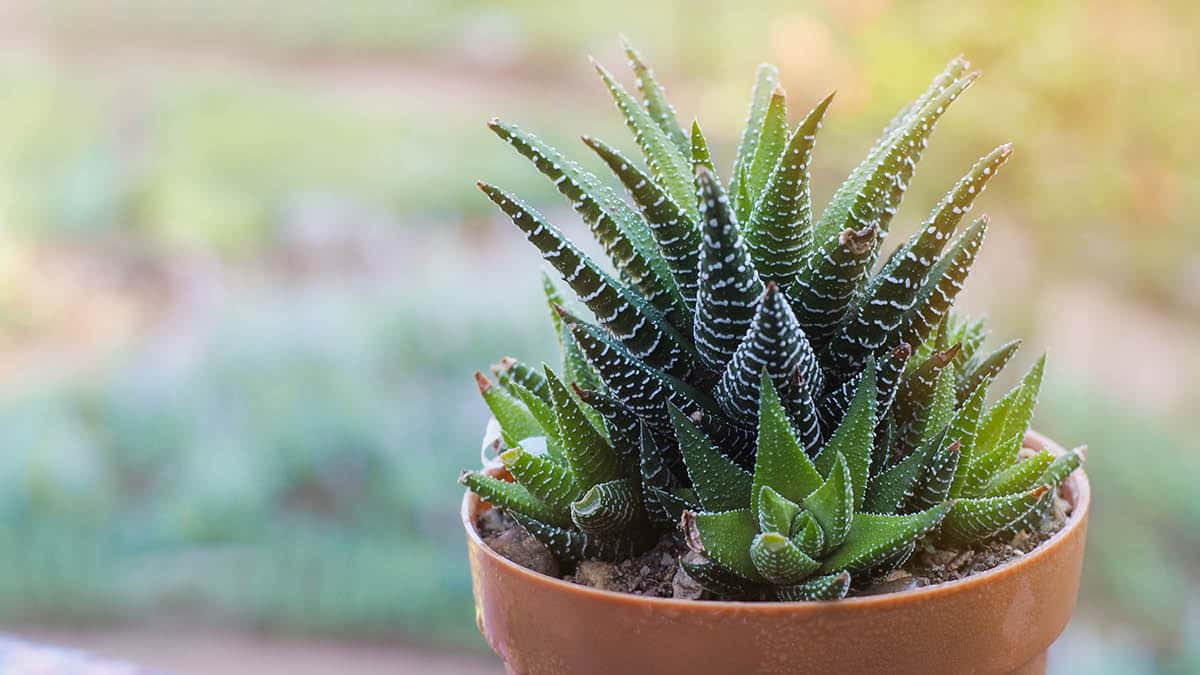
Haworthia Care:
Haworthias thrive in bright indirect to direct sunlight and are more tolerant of medium indirect light than other common succulents. Water every 2-3 weeks, allowing the soil to dry out between waterings. Expect to water more often in brighter light and less often in lower light.
Maranta
Maranta is named in honor of Bartolomeo Maranta, an Italian physician and botanist of the 16th century who organized his knowledge of botanical pharmacology by nomenclature, species identification, and medicinal properties.
Maranta, also known as a Prayer Plant, are tropical plants native to Central and South America. The name ‘Prayer Plant’ comes from the tendency of plants in this family to droop or ‘pray’ at night.
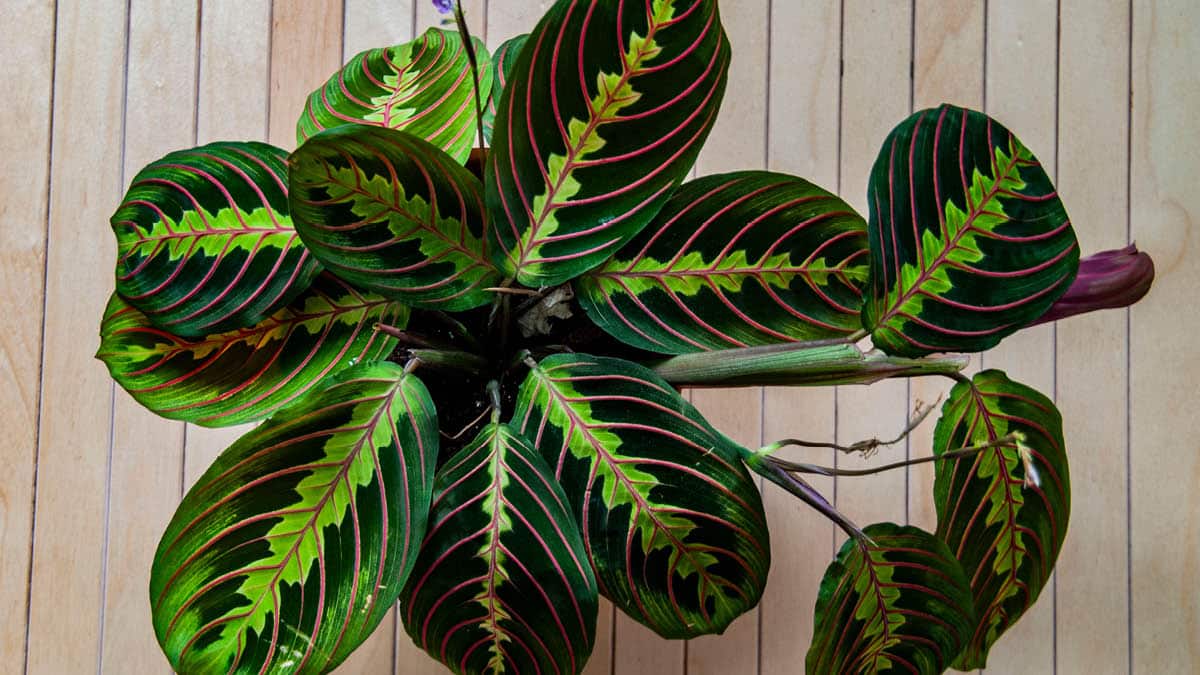
Marantas Care:
The Prayer Plant thrives in medium to bright indirect light. Not suited for intense, direct sun. Allow the soil to dry out halfway down between waterings. Expect to water more often in brighter light and less often in lower light. Since Marantas can be sensitive to hard tap water, try using filtered water or leaving water out overnight before using.
African Violets
African violets are one of the most popular flowering houseplants. African violets are small non-toxic houseplants that produce white, blue, or purple flowers over fuzzy leaves. They have slender, upright leaves that grow from a central crown and attractive flowers on each leaf’s tip.
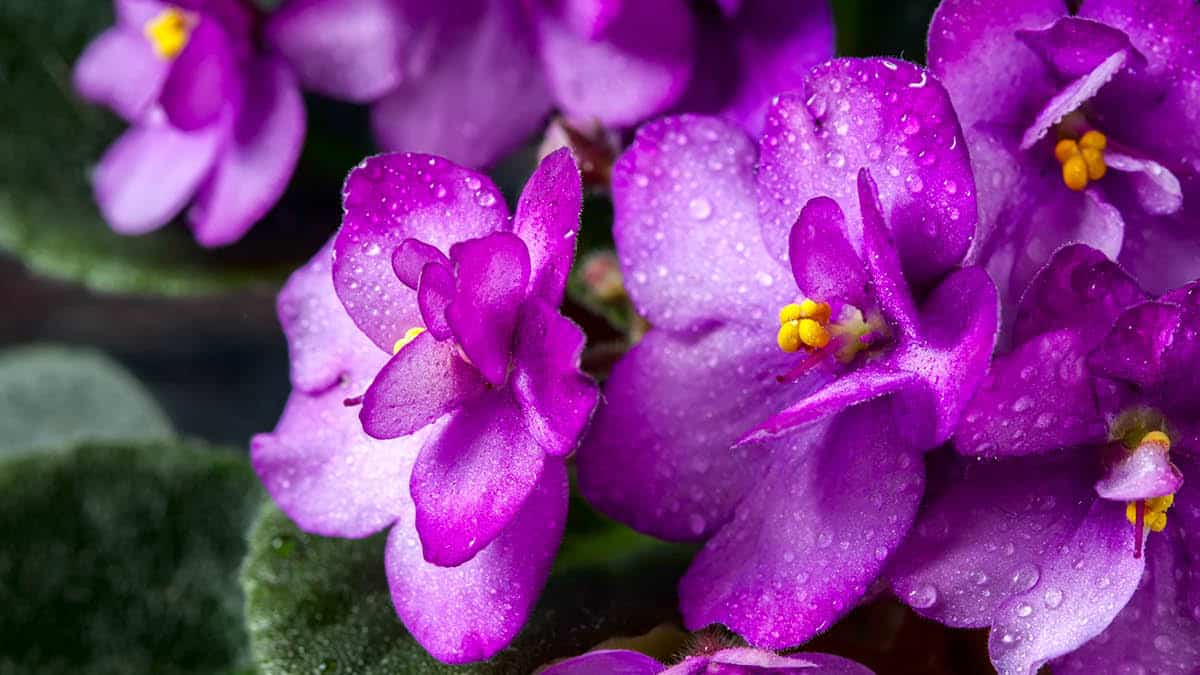
African Violet Care:
African violets prefer bright, indirect light. Avoid direct sunlight and keep them at least a few feet away from sunny south- or west-facing windows. An east- or north-facing window gives them the best lighting without the risk of burning their sensitive foliage. African violets can be grown in several different ways indoors. Place your African violet in sunny windowsills or under fluorescent lights—water from the bottom to avoid excess water on the foliage.
Spider Plant
Also known as a Ribbon Plant or Airplane Plant, the Spider Plant is considered one of the most adaptable houseplants and the easiest to grow. This low-maintenance houseplant can grow in many conditions and suffers from few problems. Spider plants are named because of their spider-like plants, which dangle down from the mother plant like spiders on a web. Available in green or variegated varieties, these spiderettes often start as small white flowers.
Spider plants are excellent for hanging baskets, planters, and pots on the patio. The plant grows from a tuberous root that is called a rhizome. A rhizome is an underground stem that has buds or eyes on it. The buds develop into leaves and shoots that produce roots of their own. The leaves are dark green and have a distinctive red stripe running down the middle. Mature plants can have up to several dozen leaves that can be as much as 3 feet long.
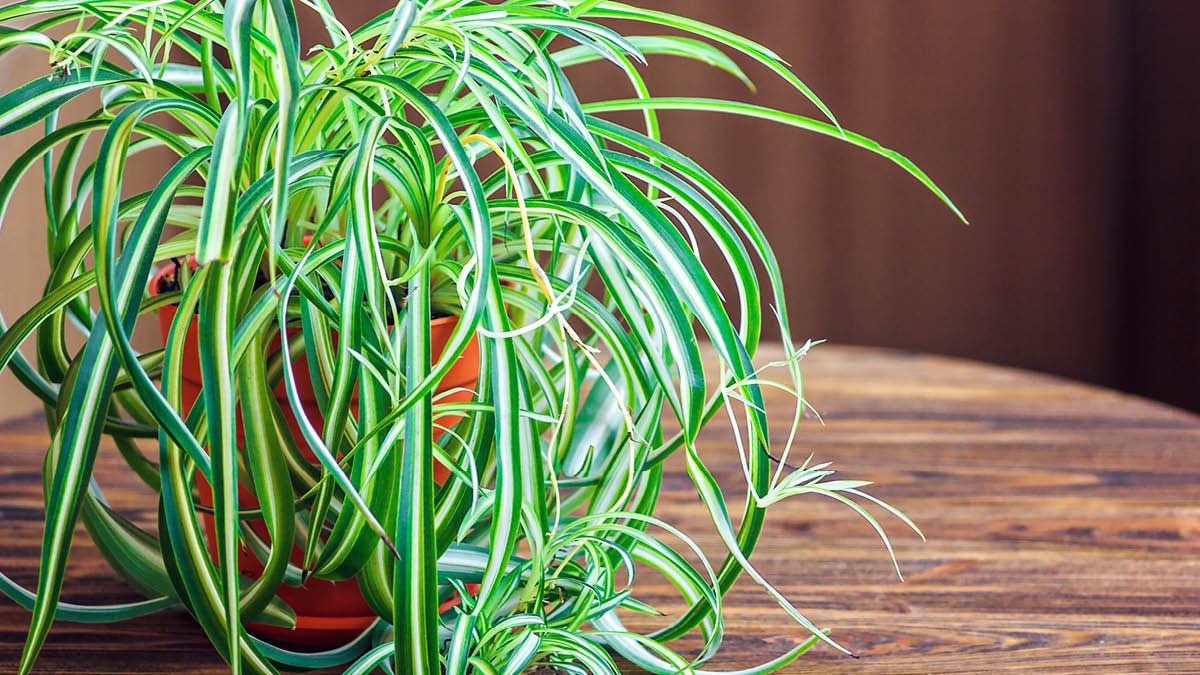
Spider Plant Care:
Care for these indoor plants is easy. Spider plants are tough plants that tolerate lots of abuse, making them excellent candidates for newbie gardeners or those without a green thumb. Provide your spider plants with well-drained soil and bright, indirect light, and watch them flourish. Water your spider plants well but do not allow the plants to become too soggy.
Calatheas
Calathea is famous as an ornamental plant that can look very dramatic and lovely in your home. They have large, colorful, intricately patterned leaves that make them attractive decorative houseplants. Calathea is known for the unique leaf movements of patterned foliage.
In the tropics (primarily Brazil), colorful calathea leaves are used for handicraft and food wrapping. Because of the diversity of leaf shapes, baskets are weaved with the lanceolate leaves, and food is wrapped with the broader leaves. These colorful leaf markings also make them popular houseplants, and their popularity has been growing.
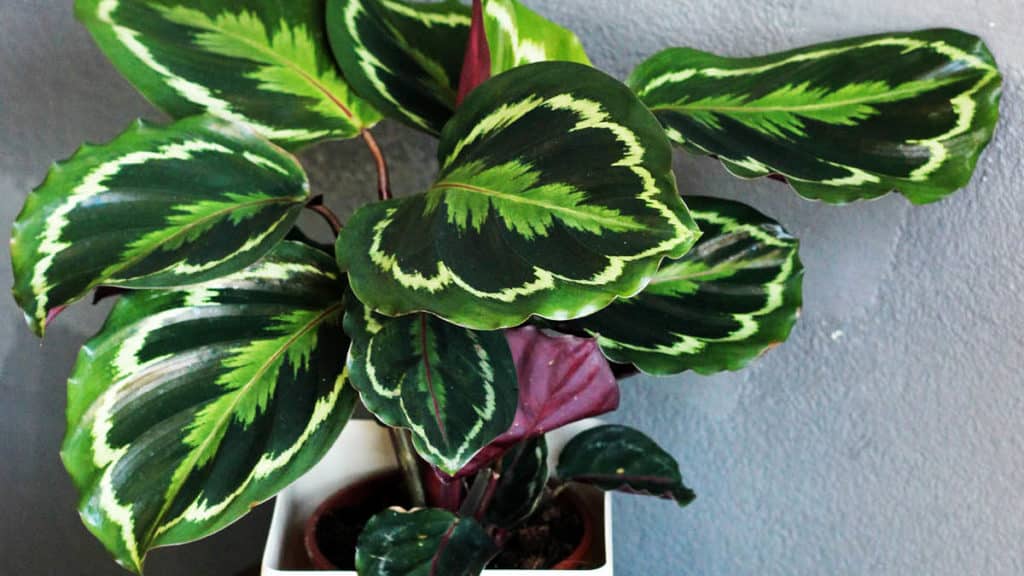
Calatheas Care:
These plants love medium to bright indirect light but can also tolerate low light. Allow the soil to dry out halfway down between waterings. Expect to water more often in brighter light and less frequently in low light. Calatheas prefer higher humidity if possible. Consider incorporating a fine-mist mister or humidifier to boost humidity level indoors.
Hoyas
Hoya has been a popular pet-friendly plant for decades and with good reason. Hoyas are long-lived, have a classic, deep green, vining foliage, and produce fragrant, light pink, and red star-shaped flowers. Because of their thick waxy foliage, they are often called wax plants.
Hoyas are native to Asia and Africa, and there are over 300 species of Hoya found worldwide with different flower sizes, shapes, and colors. The flowers on Hoya plants come in white, yellow, pink, red, purple, and almost every color possible. Some flowers even change colors as they age.
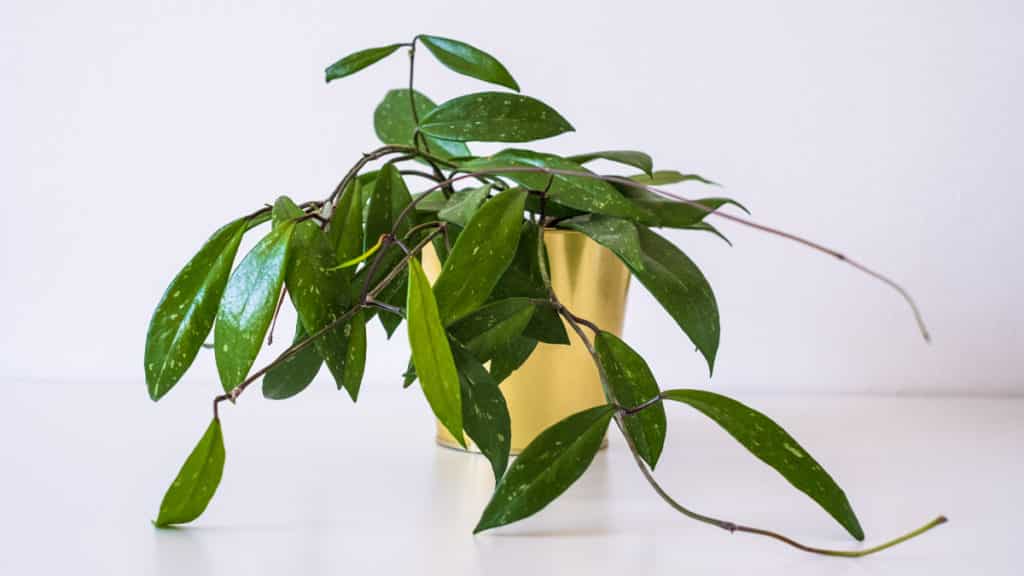
Hoyas Care:
Hoyas like warm climates and prefer to be in indirect sunlight so that their leaves do not burn. These indoor plants also need some direct sunlight to flower properly.
Peperomia
Peperomia is a beautiful genus of tropical plants native to Mexico, South America, and the Caribbean. With more than 1,000 known species, these hearty non-toxic plants boast thick, fleshy leaves that contribute to their drought tolerance and vigor. These plants are a great, pet-friendly alternative to traditional house plants because they tolerate low humidity and are slow-growing with the minimal leaf surface.
If you haven’t experienced much luck with popular flowering houseplants, you will appreciate the ornamental foliage that the peperomia sports. Its leaves can be textured or smooth in red, green, gray, or purple; variegated, marbled, or solid; large, heart-shaped, or tiny.
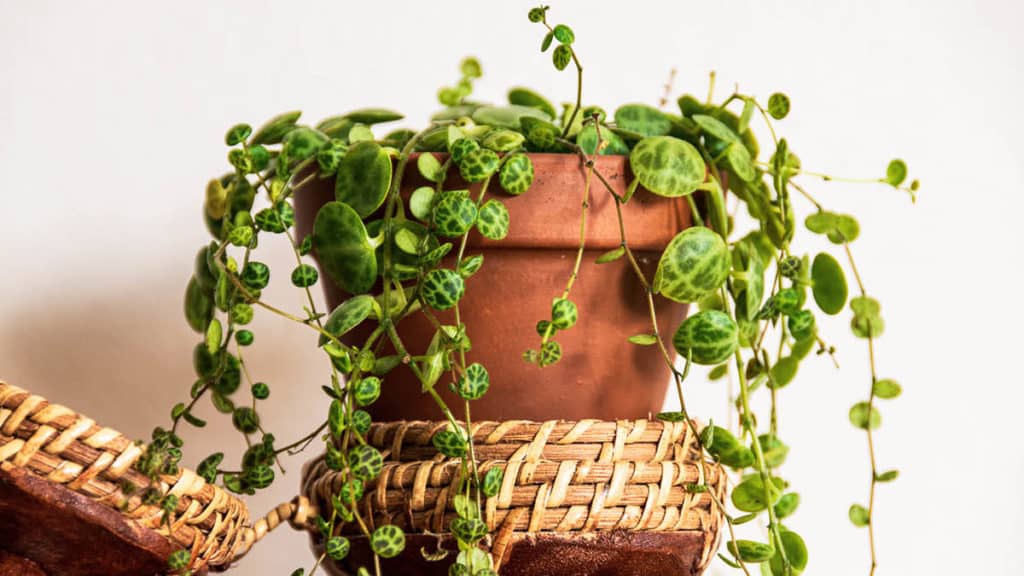
Peperomia Care:
You’ll only have to water this office-friendly houseplant weekly or biweekly if you must and give it in direct natural light. It’s one of the easiest plants to grow, making it perfect for busy people who don’t have a green thumb.
Air Plants
Air plants are the newest trend in home décor. These pet-safe plants are easy to care for and require little attention. Tillandsia is a plant that does not need soil to grow by getting its nutrients from the air around it. These indoor plants come in many different shapes and sizes so that you can add them to any room of your home. Plus, they make great gifts.
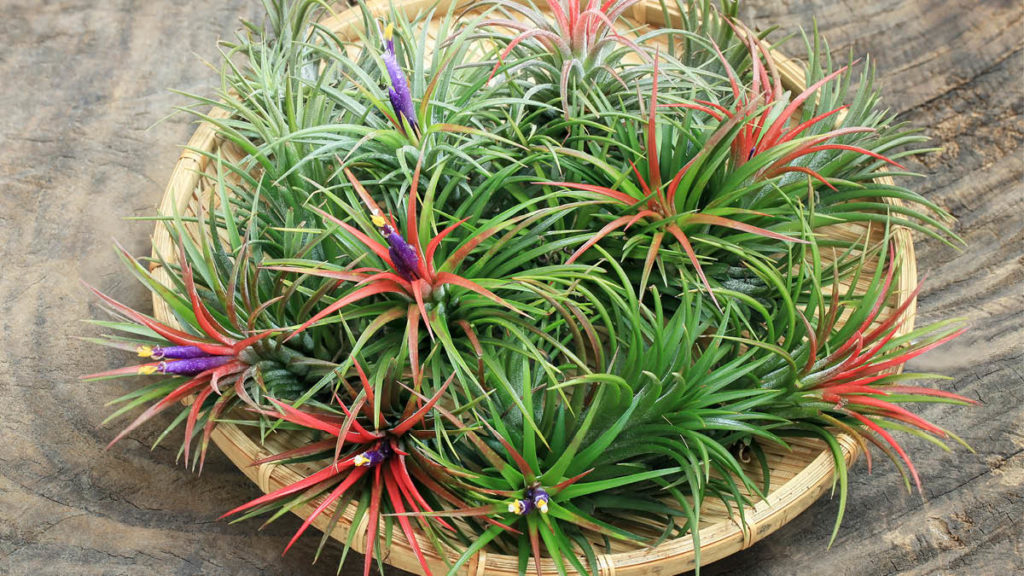
Air Plant Care:
The Air Plant is very hardy. As long as they get enough light and water every few days, they will be perfectly fine. They prefer being slightly underwater because they absorb the water through their leaves. Don’t let them dry out entirely, though, or they’ll wilt and die.
Orchids
Orchids are diverse, and these beautiful flowering houseplants are very rewarding to grow. Orchids come in various colors and range from extremely easy to grow to tricky.
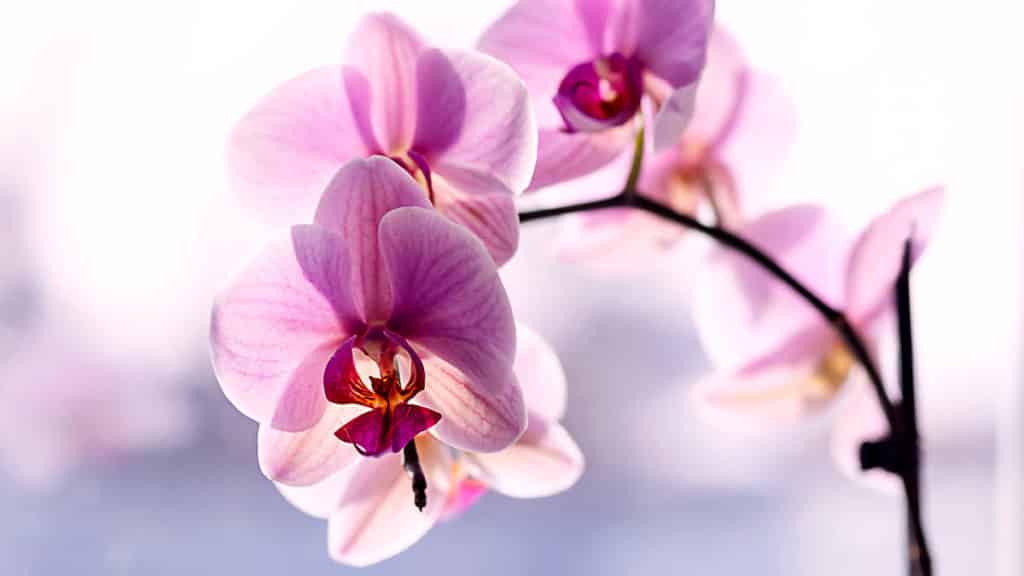
Orchid Care:
Orchids need bright indirect sunlight when they’re young but can survive lower light once they’ve reached maturity. Some orchids can handle full sun when they’ve reached adulthood. Their soil needs to be porous and drain well, so water doesn’t sit on top of it for too long.
Pilea
Pilea is also called the Chinese Money Plant and is known for its bright green, coin-shaped leaves. They grow well in dry conditions, can adapt to low light areas, and are fast-growing, making them low-maintenance and great for beginner plant owners. Pilea plants are a type of succulent, which means that they’re a plant that stores a lot of water in their leaves and stems.
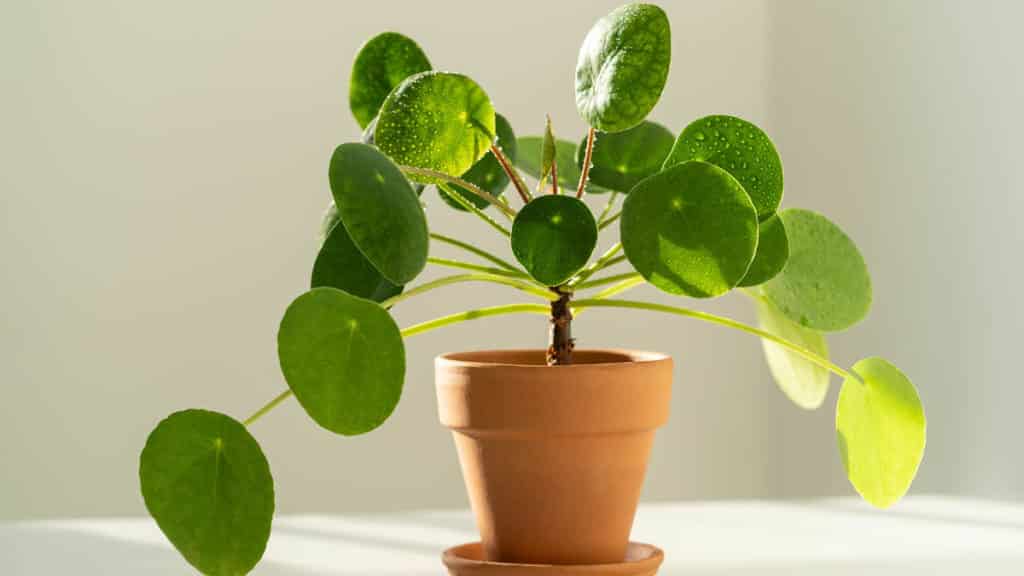
Pilea Care:
Pilea plants need indirect sunlight and should be watered about once a week or when the soil feels dry.
Palms Safe for Cats: Areca, Parlor, and Ponytail Palms
Palms are hardy plants that can be grown indoors in pots or outdoors. They are trendy additions to the garden in warm, sunny areas. Many species of palms are incredibly toxic to cats and dogs, but others are not. Non-toxic palms include:
Ponytail Palm
Ponytail Palms have palm-like leaves growing from a central stalk. The stalk can reach up to 8 feet tall.
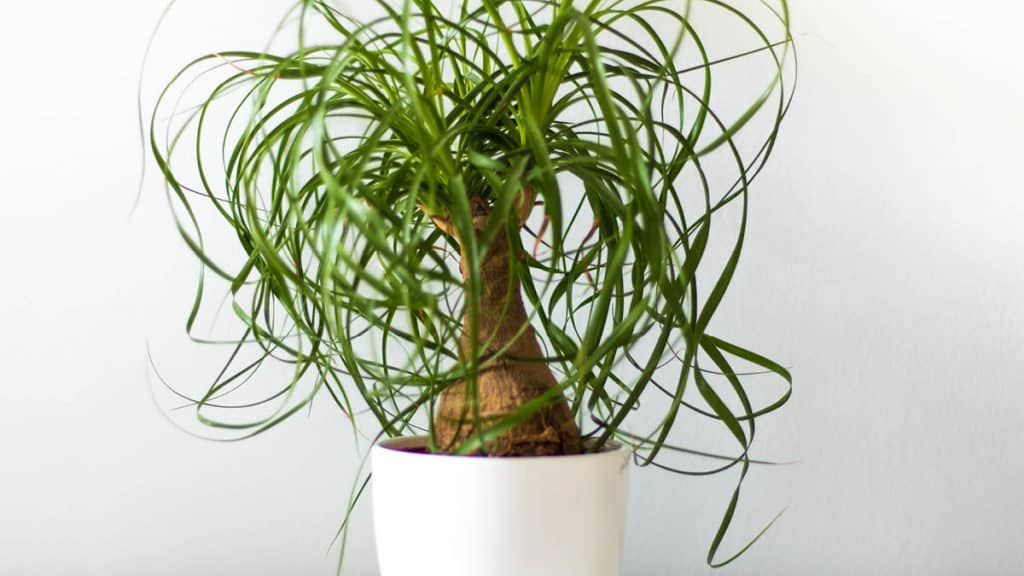
Parlor Palm
The Parlor Palm is a popular house plant and easy to grow. It has fan-shaped leaves that can provide a lovely accent for any room in the house.
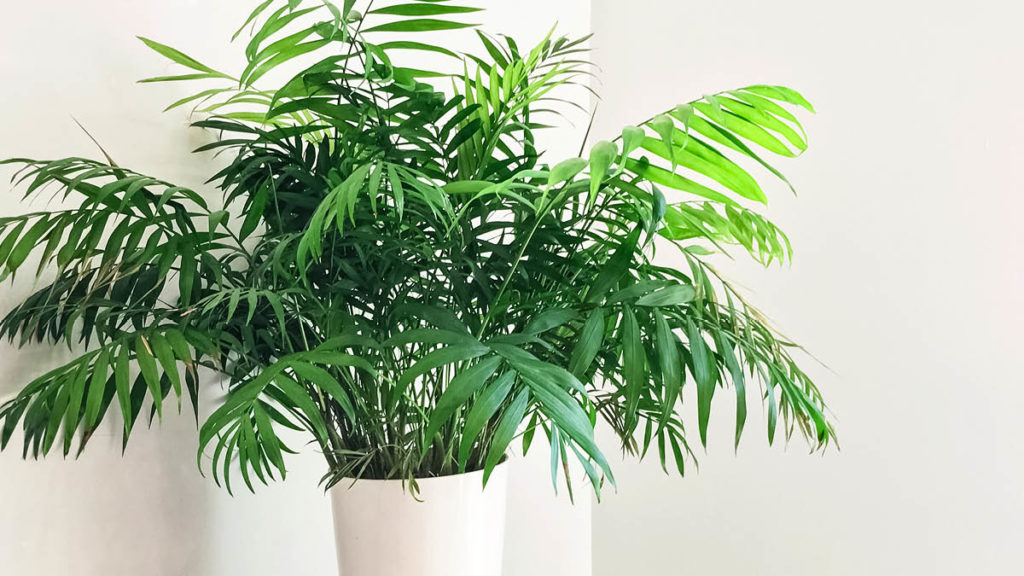
Areca Palm
Areca palms are also known as betel nut or pinang palms. If grown outside, the Areca Palm can reach up to 20 feet tall and have long feather-shaped leaves.
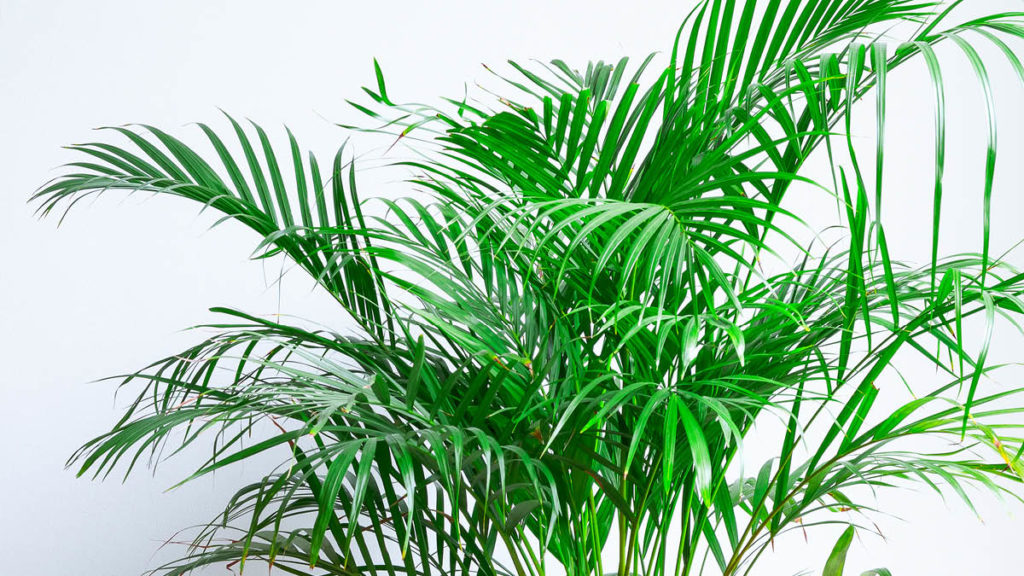
Areca, Parlor, and Ponytail Palm Care:
Palms are hardy plants that can be grown indoors in pots or outdoors. They are trendy additions to the garden in warm, sunny areas. Many species of palms are poisonous to cats and dogs, but others are not.
Ferns Safe for Cats: Boston, Maidenhair, Staghorn, Bird's Nest Ferns
All ferns are not poisonous to cats, but some ferns can cause your cat problems. Below are some pet-friendly plants for pet owners.
Boston Fern
The Boston Fern is the most popular indoor fern for pet owners. The Boston Fern grows up to three feet tall and has a spread of one foot. The spores of this plant are not poisonous to cats and dogs, or people.
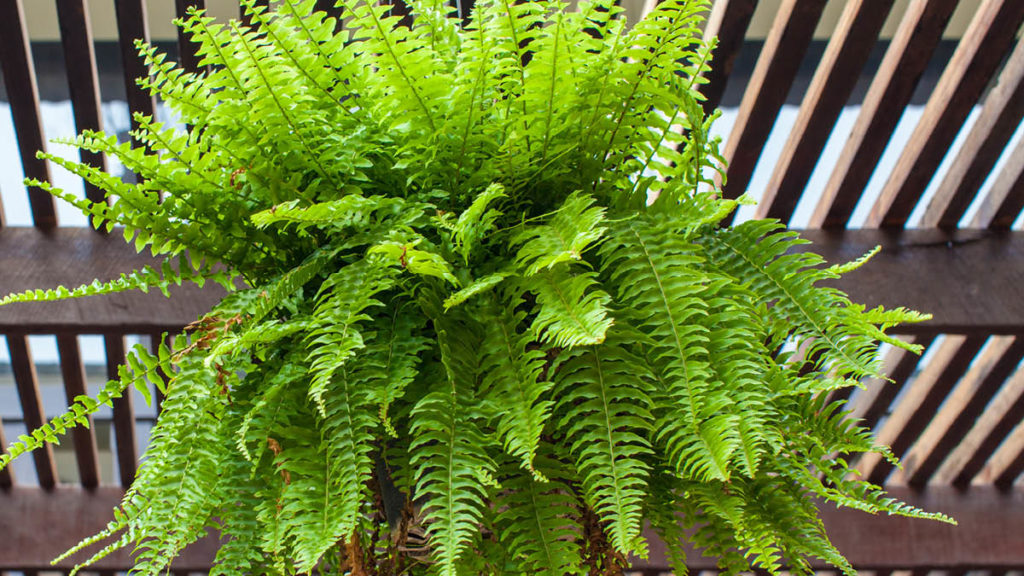
Maidenhair Fern
Maidenhair Fern is another popular pet-friendly plant choice; it does not spread as much as the Boston Fern. These ferns have a natural insecticide in their fronds and are great air purifiers for your home. The Maidenhair Fern also spreads more slowly than other varieties of ferns and will only reach a height of 18 inches when mature.
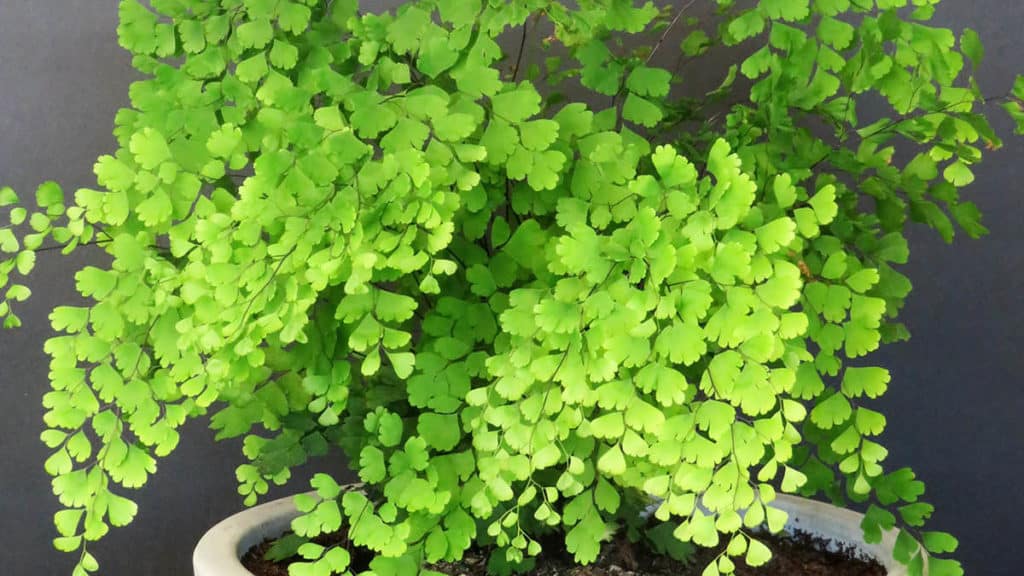
Staghorn Fern
Staghorn Fern is easy to grow indoors and does well in direct sunlight or shade. The Staghorn Fern can tolerate low to partial light levels but do best with medium to bright light, so placing them near a window that gets plenty of the sun is ideal.
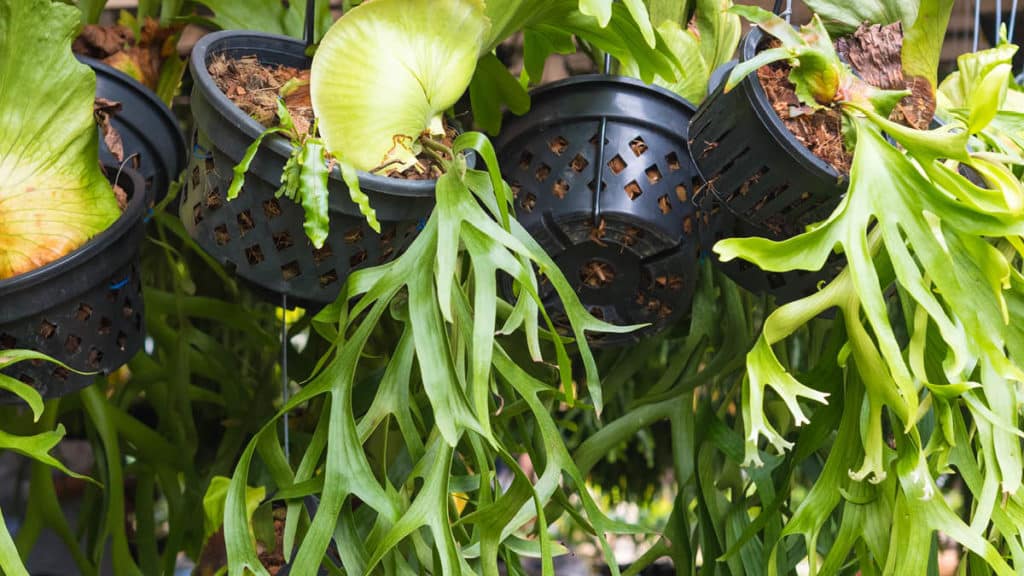
Boston, Maidenhair, Staghorn, Bird's Nest Fern Care:
Ferns do well in indirect light but can be placed anywhere in your home as long as they don’t get direct sunlight. You should lightly water your fern when the soil feels dry.
The Bottom Line
You don’t have to choose between your indoor garden or your cats and dogs. At Strader’s Garden Center, we recommend keeping your indoor houseplants out of reach of your cats and dogs by using a shelf, plant stand, or a hanging basket to prevent your pets from getting to your beautiful plants.
As a friendly reminder, if your cat or dog has ingested any part of a poisonous plant, always seek emergency care for your pet right away.












